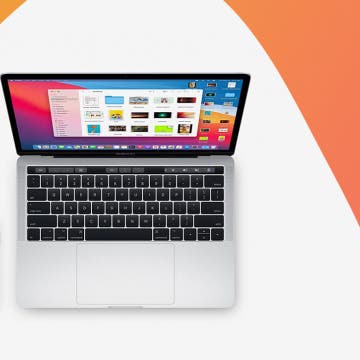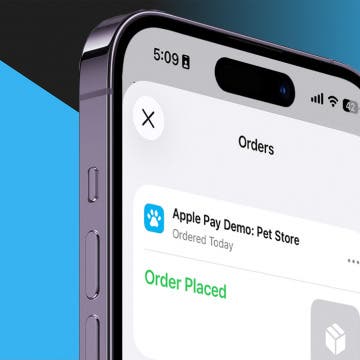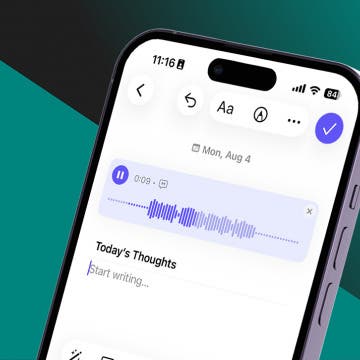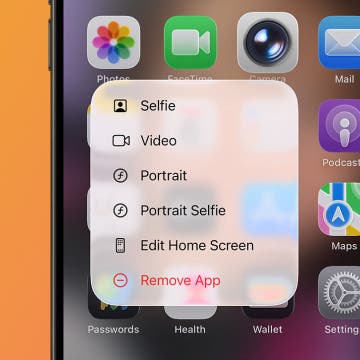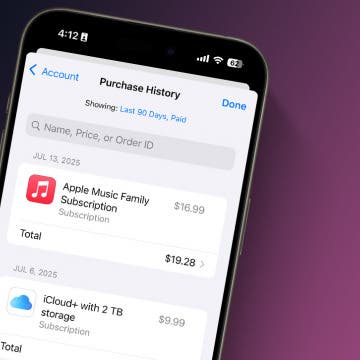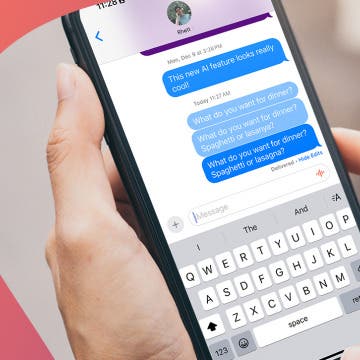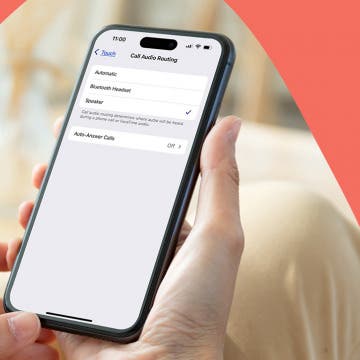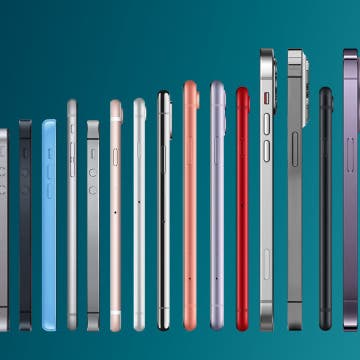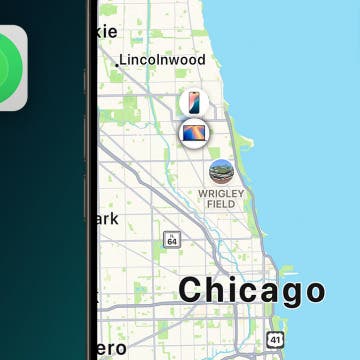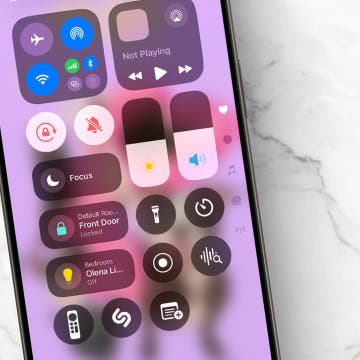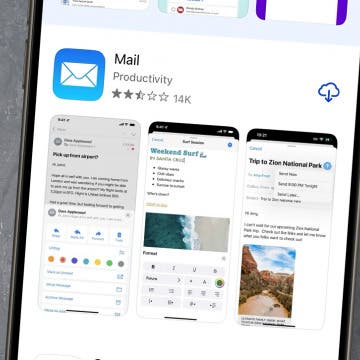 In the Weeds Finale there was only one phone: the iPhone 10. Jenji Kohan and her Weeds team weren’t trying to forecast the future, they were just trying to tell a story. They spent some time, however, imagining the world in which Nancy Botwin existed, and in doing so, they revealed the final iPhone phone design: a marvelous glass-and-light device. I can only guess at its name, but glimpses at the display showed a prominent round button at its base. The device had to be an iPhone.
In the Weeds Finale there was only one phone: the iPhone 10. Jenji Kohan and her Weeds team weren’t trying to forecast the future, they were just trying to tell a story. They spent some time, however, imagining the world in which Nancy Botwin existed, and in doing so, they revealed the final iPhone phone design: a marvelous glass-and-light device. I can only guess at its name, but glimpses at the display showed a prominent round button at its base. The device had to be an iPhone.
With the anticipation of this week’s launch of the iPhone 5, Dr. Shathley Q of PopMatters.com asked me what I thought of the new iPhone, along with a parenthetical remark that many said it wasn’t as innovative as expected.

I responded by saying there is only so much you can do with a slab of glass and metal. You can cram more and faster components into it, but at some point, the form factor limits to innovation. Human fingers and the need to access functions create a context. When devices get so small and so simplified, anything Apple does in hardware can quickly be mimicked by another manufacturer, patent law not withstanding. The innovative cycle on the current form factor is nearing its limit.
Thus we have the device in Weeds, the ultimate expression of the iPhone in its current form factor: a single piece of glass, with rounded corners and a thin line of color running just inside the edge. No phone could ever be thinner or lighter than the device shown on Weeds. Unfortunately, the fictional iPhone 10 also demonstrates the limits of human imagination. The iPhone 10 appears in iPhone 4 profile, not stretched like iPhone 5, which was announced well after filming and special effects work was completed on Weeds.
Beside its thin profile, the Weeds iPhone 10 device seemingly offered a number of features beyond iOS 6 and the current iPhones, including:
- Integrated barcode or Near-Field Scanning
- Projected keyboard (ala ISL Trading’s Magic Cube)
- Transparent stand accessory (may have been third party)
- Mobile payments with a security pin
(Note: I’m not saying that is all the phone could do, but it was all I saw them do.)
With the right add-ons and apps, most of those features are available today, but it is unlikely technology will progress to the point that a thin glass iPhone 10 contains them all.
But the form factor and function limit isn’t the whole story. The next innovation in communications will likely arrive in a package that looks nothing like a phone. Perhaps it will be Dick Tracy’s wrist watch, or Captain Pickard’s communicator pin, or Lt. Uhura’s earpiece.
That begs the question of what we want from phones, because increasingly, it isn’t voice communications. Does that mean voice become subsumed with data, and the real value of the device is the display? The increasing size of displays certainly argues for that. Just a few years ago the large displays of current Android phones would be ridiculed because they didn’t comfortable fit in rear pocket. People not only accept large screens today, but covet them as much as they do big screen TVs. Our tastes have changed.
If displays drive function, is it necessary to carry the display, or could devices plug into any convenient display surface like people do with public WiFi? Proximity sensors notify users of available display surfaces and scheduling algorithms book the surface to avoid conflict. With the right materials, people sitting at the same table could use the same surface to view different information depending on their orientation to the crystals, making a single surface available to multiple people. In the car, internal displays pickup the device’s visual output functions and integrate it with entertainment and navigation features.
And then there is the camera. Phones have clearly become the camera of the masses. The use of the iPhone 10 to scan barcodes was a stretch. I’m not sure what lens and sensor technology the iPhone 10 would use (though conceivably, the glass could be engineered to integrate a lens and the sense could be near-transparent) — Apple, however, with the current iPod Touches, clearly announced their intention to display cameras with higher end optics and a wrist strap.
And changing tastes are leading people away from voice toward text. You don’t need a big screen to communicate via text. Do these functions get separated out? I’m guessing not. Text is so lightweight it can be embedded in anything.
Let me go back to the car for a minute. We are on the verge of duplicating all of our phone functions in the car: voice, text, navigation, media. There is very little that my iPhone can do that my car can’t. Why do I need both? (Well, I know you can’t drive an iPhone, so you need a car, just not a smart one). Do we get to a point where consumers push-back against cars that add thousands of dollars to the sticker price for features they already carry with them on their phone? Or does the car become a big expensive rolling backup? If you phone is stolen, you get in your car and it connects to the cloud to both cradle and save your ass.
But breaking up the iPhone is also possible. Siri, embedded in a device like the Jawbone Nerd, could handle voice and text all through voice commands. Connect that device with an eyeglass display and your eyes become the new gestural input device. Although the phone may, if we keep its functionality consistent, remain locked into its current form, its functions could be scattered into other devices, making the phone archaic and irrelevant.
The future of the phone is a complex one. Donald Norman suggests in The Invisible Computer that personal computers are too complex. The future will be dominated by information appliances that disappear into the background. Bruce Tognazzini, a colleagues of Norman’s at the Nielsen Norman Group, is a fan of Apple’s hardware and software, and sees it as such an appliance. Perhaps we will have to realize that the flat, elegance of the iPhone and its competitors is all there is. You can’t make it smaller without starting to give things up. You can make it faster, even cheaper, but over the years it will continue to look approximately, physically the same. The Weeds iPhone 10 then, may be an intriguing fiction, but hardly a realistic design, though variations on that theme, such as a roll-out OLED display with stiff-memory (once rolled-out it remembers how to be flat until it is told to roll-up again) may be practical in the next decade.
Software, of course, will continue to evolve. I’ve just downloaded iOS 6 as well as Apple OS X Mountain Lion Updates. Yesterday FaceTime didn’t cooperate across devices, today it does. Software is digital poetry. It is pure metaphor and completely malleable. When people say the iPhone has become stale, I think they are talking more about the operating system experience than about the hardware. The Weeds iPhone 10 employed straight forward design to support their storytelling needs. Microsoft has challenged Apple’s one-thing-at-a-time assumption with Windows 8. With so many different tastes, and so many different ways to craft software to meet those tastes, we will likely see much more revolution in the operating system than in the hardware. Perhaps iOS will eventually create very personalized, integrated experiences based on people desires and tastes, without giving up Apple’s ownership of the information architecture.
The Weeds finale with its iPhone 10 device aired the same week the iPhone 5 is to ship, providing an opportune moment to speculate on what is next. The best answer is we don’t know. A range of possible hardware and software designs could emerge. Apple has abandoned its UIs before, and it will likely do so again. The iPhone 5 “lightening connector” forces rethinking of accessories starting now. We may see some flat, fast, near sentient single device, or in a decade, the phone as we know it, may have decomposed into a hundred tiny devices. What we do know is that regardless of Apple’s intentions, consumers ultimately design the future through what they buy and don’t buy. The last iPhone’s design belongs to us—if its announcement is accompanied by a bang or a whisper, however, remains to be heard.




